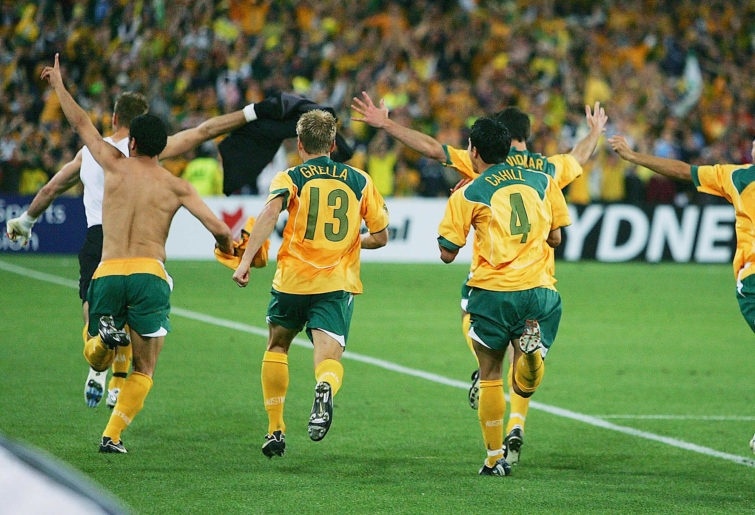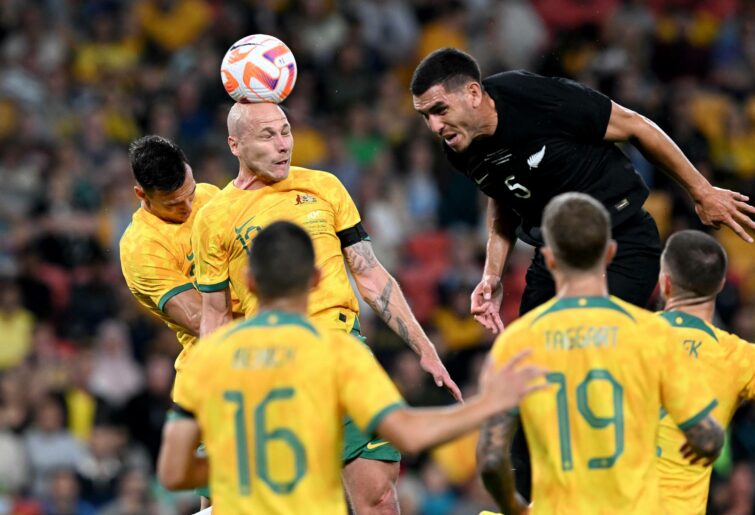The love affair between Australia and sport cannot be compared anywhere else in the world.
From AFL, rugby and cricket to major sporting events such as the grand prix, Melbourne Cup and Australian Open, there are so many pathways for juniors to select their favourite sport and passion.
There is no denying that this sporting culture should be embraced given it allows so many talented athletes to ply their trades and represent their club and country.
For football, however, it comes at a major cost.
Never has the world game truly had the opportunity to thrive in Australia due to the significant competition from rival codes. It’s stagnated the growth of the game.
It doesn’t help when the sport gets put down time and time again in the media to give it a bad reputation.
There is no example that infuriates football fans more than Eddie McGuire’s comments about the 2015 Asian Cup hosted in Australia potentially being a “lemon”.
This is the same person who took his crew over to Germany in 2006 to host the Footy Show and hop on the bandwagon of the Socceroos’ success at the World Cup.
Then there are the media who are quick to jump on the opportunity to shine a negative light on crowd violence or a flare being lit in the stands.
Of course that has to be a major news story, but when something great has happened in the A-League or the national team, it is certain to be last in the bulletin or seen on the last page of the sports section.
If you think about it, there have been so many ups and downs in the progress of Australian football to the point where it would make anyone dizzy.
- Introduction of the new A-League format in 2004
- The play-off against Uruguay to qualify for the World Cup for the first time in 32 years
- The successful 2006 World Cup campaign
- Sydney FC’s signing of Alessandro Del Piero
- Record A-League crowd of 61,880 at the Sydney derby in 2016
- Western Sydney Wanderers’ 2014 Asian Champions League triumph

(Photo by Cameron Spencer/Getty Images)
These highlights should have paved the way for the continuous growth of football all around the country. Instead, steps have also been taken backward.
- Poor performances at the last three World Cups
- A failed youth system since the golden generation was produced leading into 2006
- A decrease in advertising, crowds and TV ratings in recent years for the A-League
- Crowd trouble, including racism and fascism
Again, Australia’s showing at the World Cup in 2006 will be mentioned as a prime example.
For the two weeks that the Socceroos were in the tournament as well as the lead-up prior to it, the country was taken by storm, with all of the attention dominating the headlines of the TV and newspapers. The hype was unreal.
When the Qatar World Cup rolls around later this month, the supporters and general public will get behind the green and gold and be part of the frenzy.
After that though, football becomes the last topic of conversation and interest. No longer can we just put a band-aid around an unsustainable model of attempting to generate intrigue and attract eyeballs.
Football undoubtedly has the potential to become the biggest sport in Australia one day, but that potential is unrealised, which is the saddest part.
As mentioned, this country thrives on producing incredible athletes. That includes developing top-class footballers over the years, like of Harry Kewell, Tim Cahill, Mark Viduka, Marco Bresciano, Mark Bosnich, Ned Zelic, Paul Okon and many more.
Nowadays the grassroots program is what is holding the game back here. Poor coaching, lack of tactical knowledge and poor funding are the main causes.

(Photo by Vince Caligiuri/Getty Images)
According to a participation report conducted by Football Australia last year, football is still the most participated sport in Australia, with a total of over 1.4 million registrations for boys and girls, including coaches, referees and volunteers.
The women’s game is also rapidly on the rise, with an increase in popularity due to the success of the Matildas and the upcoming Women’s World Cup due to be hosted Down Under next year.
If this is the case, then why is the code struggling to translate these encouraging numbers into high-quality youth programs?
It all has to do with the funding, or rather the lack of it, as far as football is concerned. More time and money are invested in the other major codes, such as Aussie rules and cricket, despite them not having close to the participation figures that football is able to achieve.
Registration and fees are beyond ridiculous compared to other sports, with the average National Premier League (NPL) club charging between $2000 and $3000 just for kids to play at a higher level.
What level exactly is that though? The standard is nowhere near that of Europe and other parts of the world, and the development of Australian players has dropped off significantly. If anything. it is warding away parents from wanting their kids to play.
The government needs to realise that there are incredible opportunities economically if Australia focuses on being successful both domestically and on the world stage.

(Photo by Bradley Kanaris/Getty Images)
Actions such as cutting funding to SBS and not giving them the chance to retain the free-to-air broadcasting rights for the 2018 World Cup are the little details that drag the game down.
Why isn’t more funding going toward advertising and promoting the A-League? Yes, it is broadcast on Channel 10’s multichannel and Paramount, but surely there needs to be more focus on marketing the brand.
The Big Bash League is the A-League’s main competitor during the summer, and they execute their target audience perfectly, and well done to them.
There are countless times when people are not even aware that an A-League match is on or where it is even taking place.
The talent pool has obviously worn thin in recent years due to the lack of top talents being brought through the ranks, with a key focus on ageing foreigners.
To be fair, this aspect has changed since COVID, where top-tier clubs were given no choice but to throw some inexperienced kids into the deep end.
If you think about it, the Socceroos have never really had a high-profile player from an Indigenous background. There is so much potential in this area to explore and add more diversity to Australian football.
Sam Kerr and Kyah Simon are just a couple of successful players from the Matildas with an Aboriginal culture that has been able to excel in the game with their incredible abilities.
Can you imagine if football was the only sport available to Australia or at least the biggest? The code would be gifted for generations to come.
There are still many hurdles to overcome in order for the round ball game to truly flourish and gain a more respectable reputation globally.
Like it or not, Australia is not relevant in the global sporting landscape until football begins to have a large impact. People associated with other codes along with the media must stop putting it down and start embracing it.
There have been endless debates about how to fix these issues around football here on our shores, but there needs to be more effort and dedication into a sport that has the capacity to reach a global scale, unlike any other sport.
Football has overcome so many challenges in decades gone past to be in the fortunate position it finds itself today.
No longer is it a minority sport played only by European immigrants; it’s finally accepted as a mainstream game.
No longer can it be argued that Australia is incapable of producing world-class players. We’ve proven we can do it.
The next test to overcome is to unlock the unresolved problems to take football to new heights both in Australia and around the world.































































































